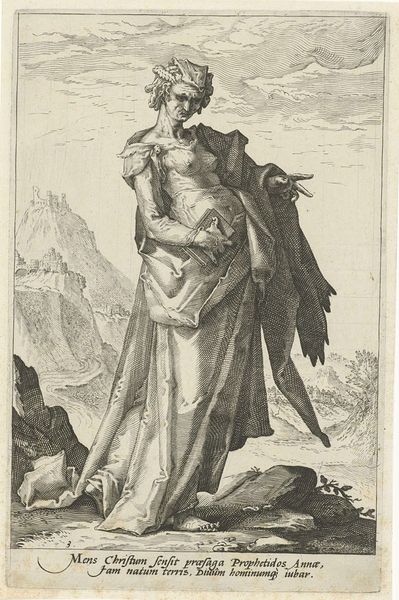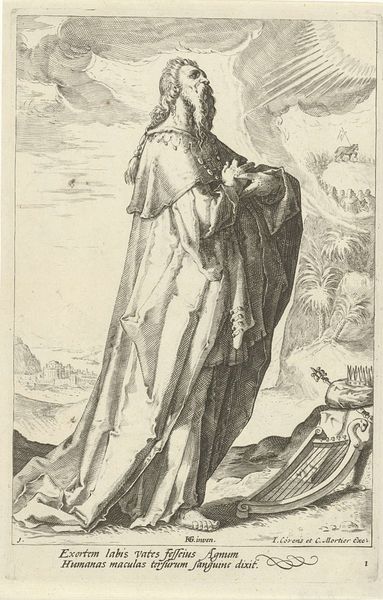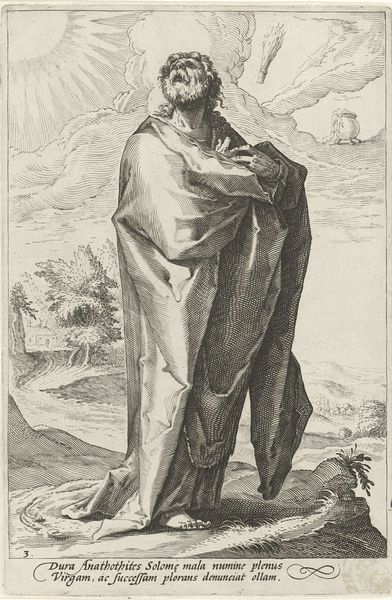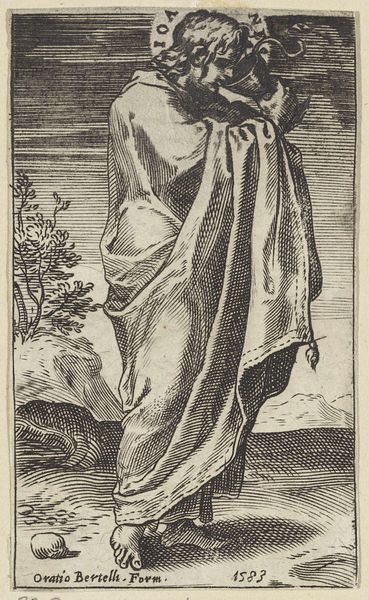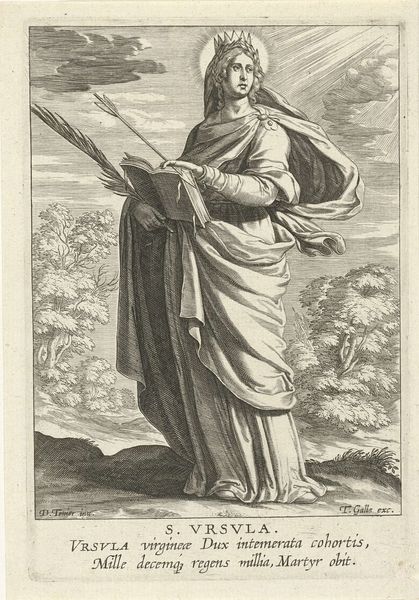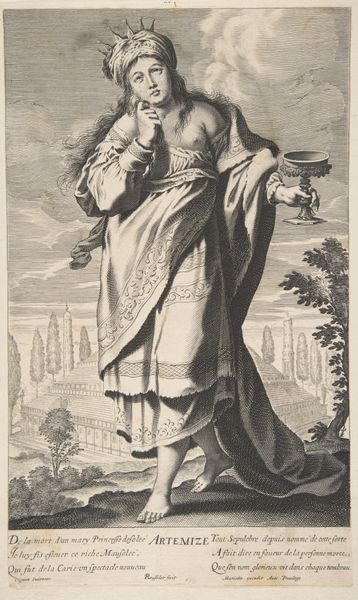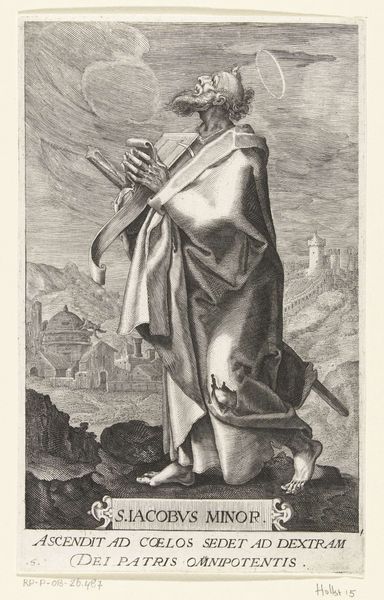
engraving
#
portrait
#
old engraving style
#
figuration
#
history-painting
#
northern-renaissance
#
engraving
Dimensions: height 250 mm, width 162 mm
Copyright: Rijks Museum: Open Domain
Editor: This is “Hulda,” an engraving by Jacob Matham, made in 1588. She seems to loom over a tiny world, a powerful, almost foreboding figure. What symbols do you notice in this piece? Curator: Hulda, often interpreted as a prophetess, is shown with a book – a symbol ripe with cultural and historical weight. What does the book signify to you? Is it knowledge? Power? Perhaps something else? Editor: I’d say it’s a sign of revealed wisdom. The Latin inscription also mentions "secrets". Curator: Exactly. Engravings like this often played a role in transmitting classical knowledge and mythological narratives. Notice the detailed rendering of her clothing and hair, yet her gaze avoids direct contact. Consider the relationship between visibility and secrecy – what's revealed and what's concealed. Editor: The buildings in the background seem like a small, almost insignificant civilization beneath her, doesn't it? I suppose it makes sense, as it suggests this woman can shape civilization through prophesy and fate. Curator: It raises the question, doesn't it, about who holds the real power, earthly or divine? In viewing Hulda, we're encountering a very specific projection of power encoded within a carefully constructed visual language. Editor: So, it's not just a portrait, but also a commentary on power structures and knowledge. I’ve definitely gained a deeper understanding of how engravings function beyond simple illustration! Curator: And I find that pondering on it always shifts and changes meaning with the context. Symbols never remain static.
Comments
No comments
Be the first to comment and join the conversation on the ultimate creative platform.
